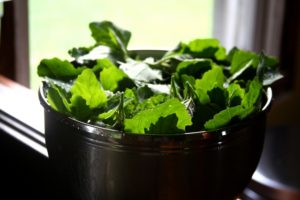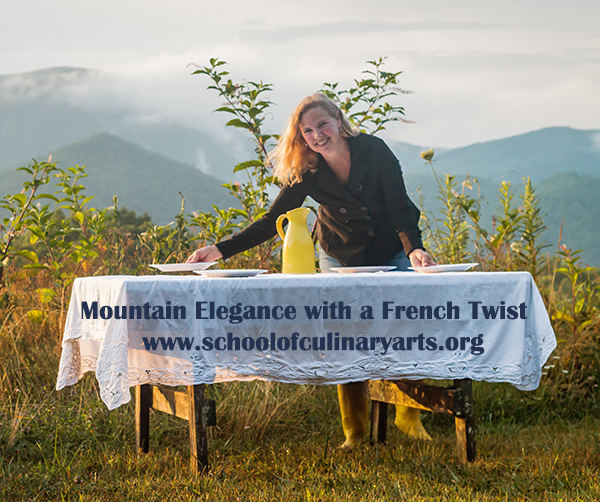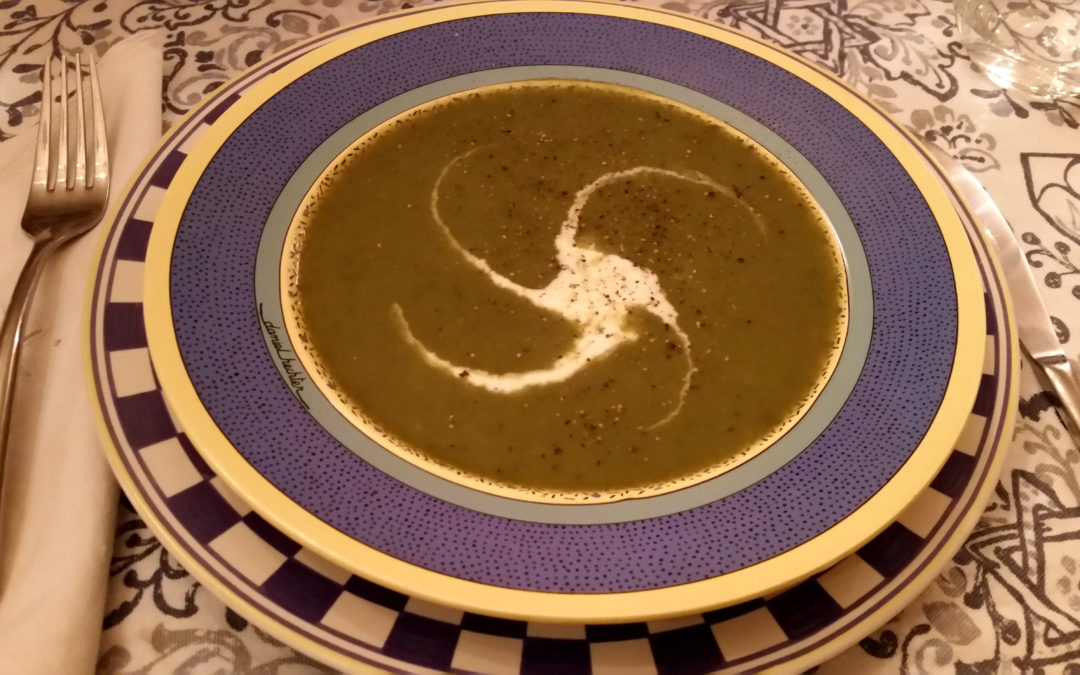
Wild foods from the Garden: Freshly harvested lambsquarters (Chenopodium album) ready for cooking in Susi Séguret’s kitchen.
“My key ingredients are ramps and morels and nettles in the spring,” says Susi. “Tomatoes and beans and squash in the summer. Apples and chestnuts in the fall. In wintertime, the squashes, the dried beans, and maybe a little more baking.”
Susi’s appreciation for seasonal cooking with a mix of foraged and farmed ingredients was cultivated in the fields and forests of her family’s 300 acre Madison County homestead in Western North Carolina. “Foraging is what you find based on the land that you have around you, while gardening is what you do to have something more predictable,” says Susi. “But sometimes the weeds in the garden are every bit as edible as what you’ve planted, and people in the Southern Appalachians have a tradition of farming wild edibles such as ramps and branch lettuce.” Who knew cultivating community resilience could taste so good?


